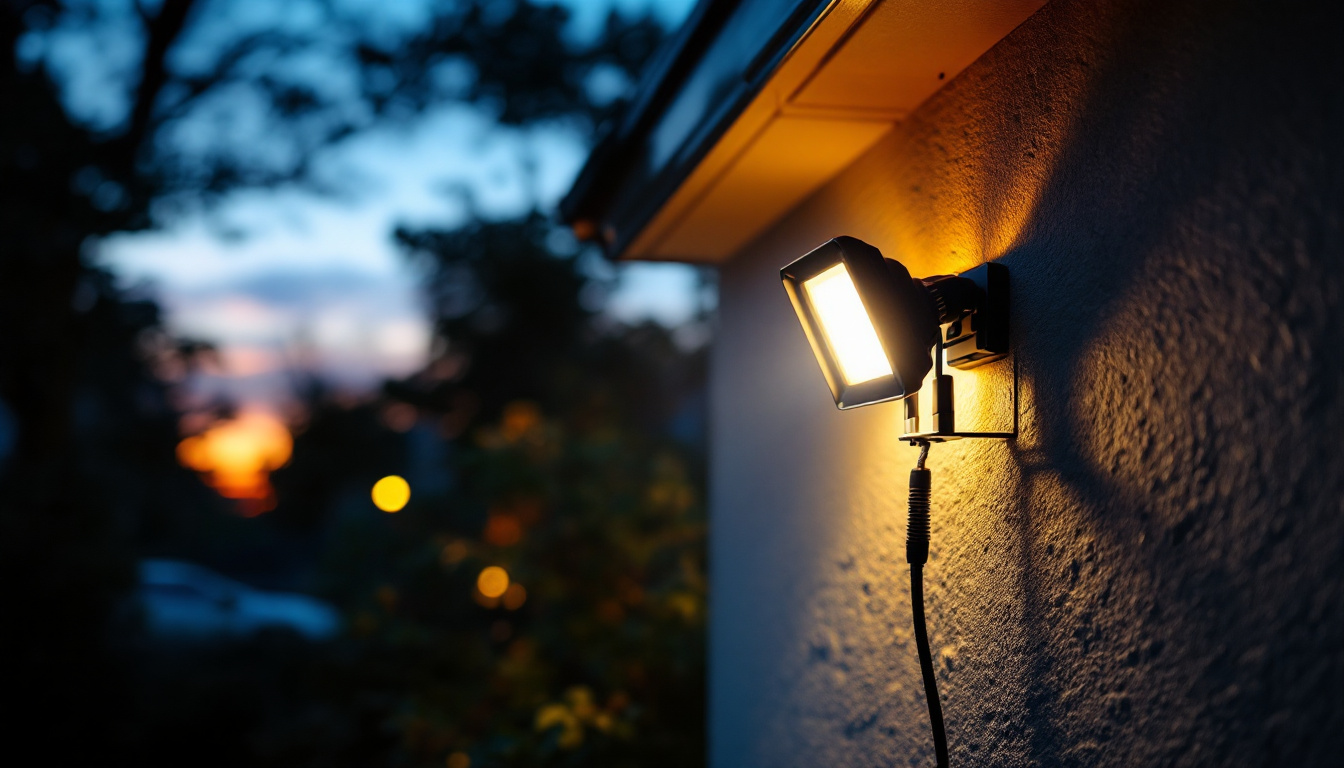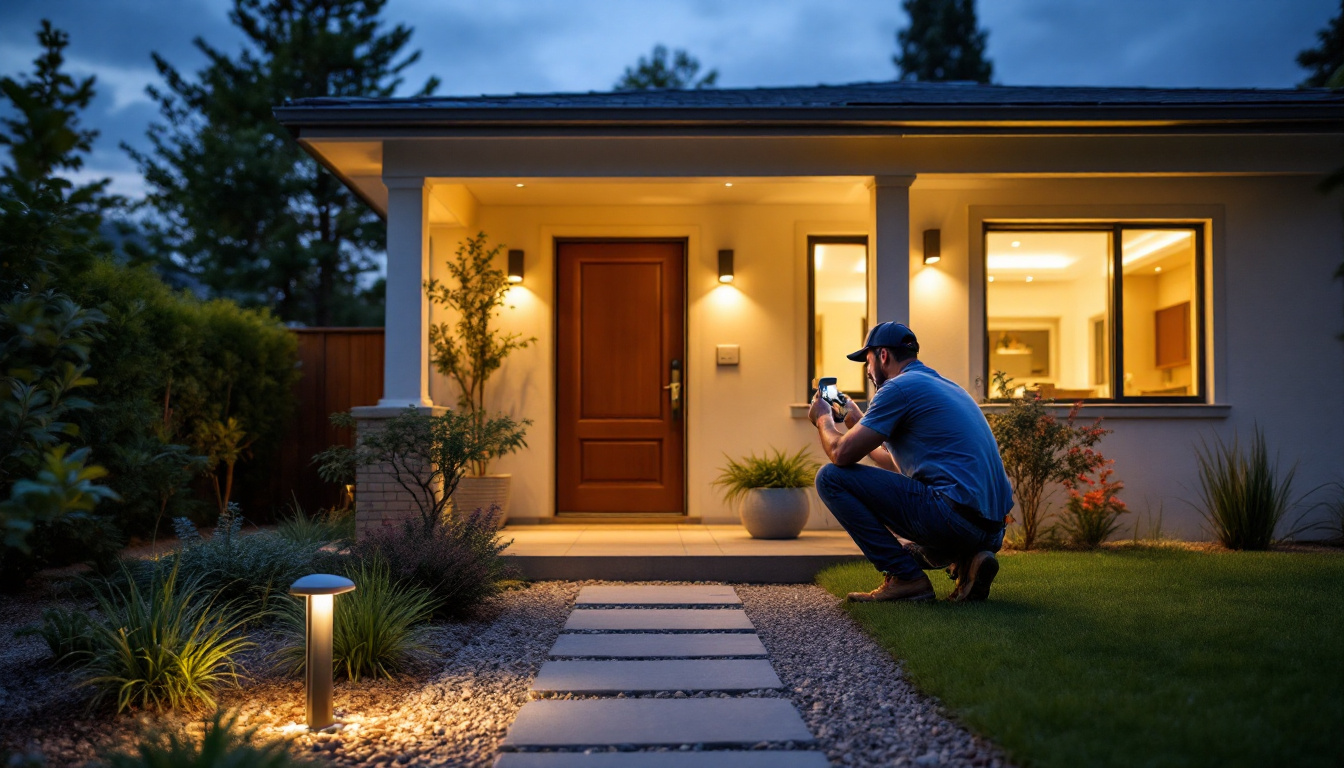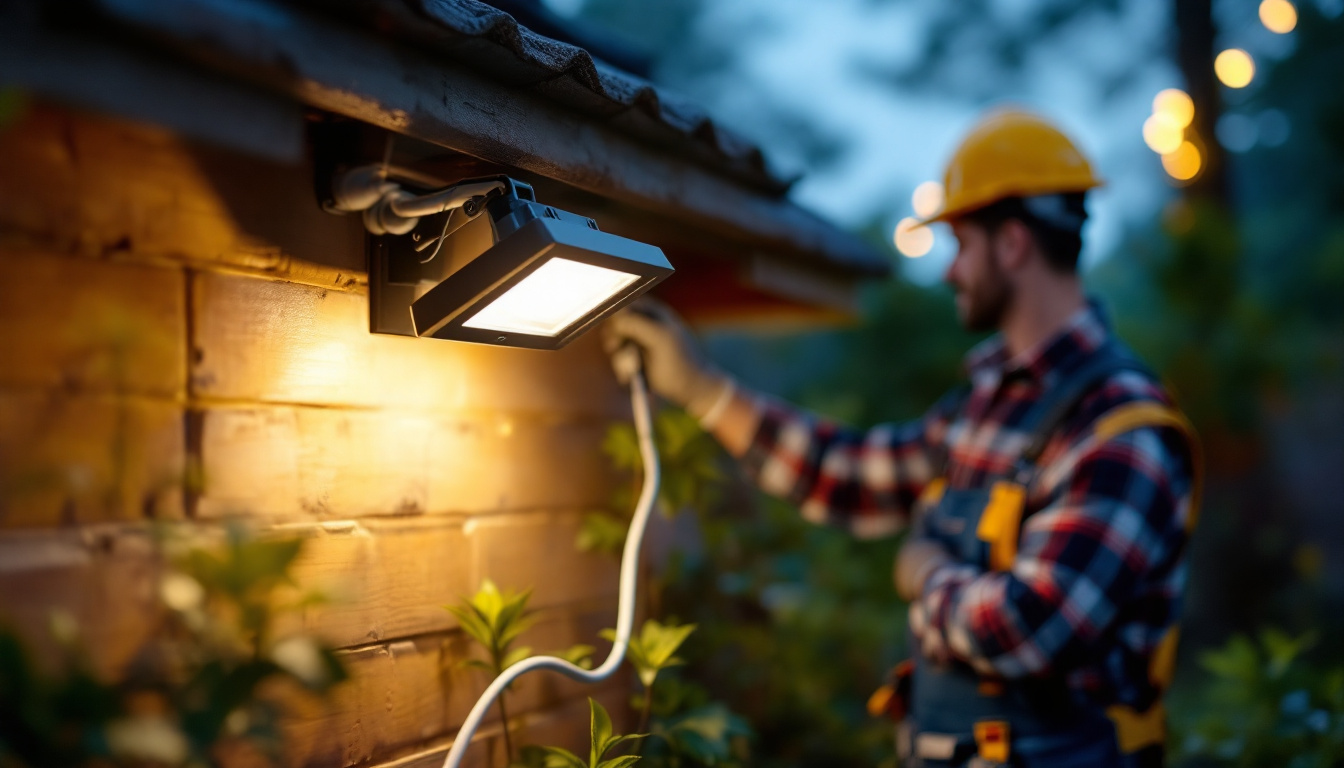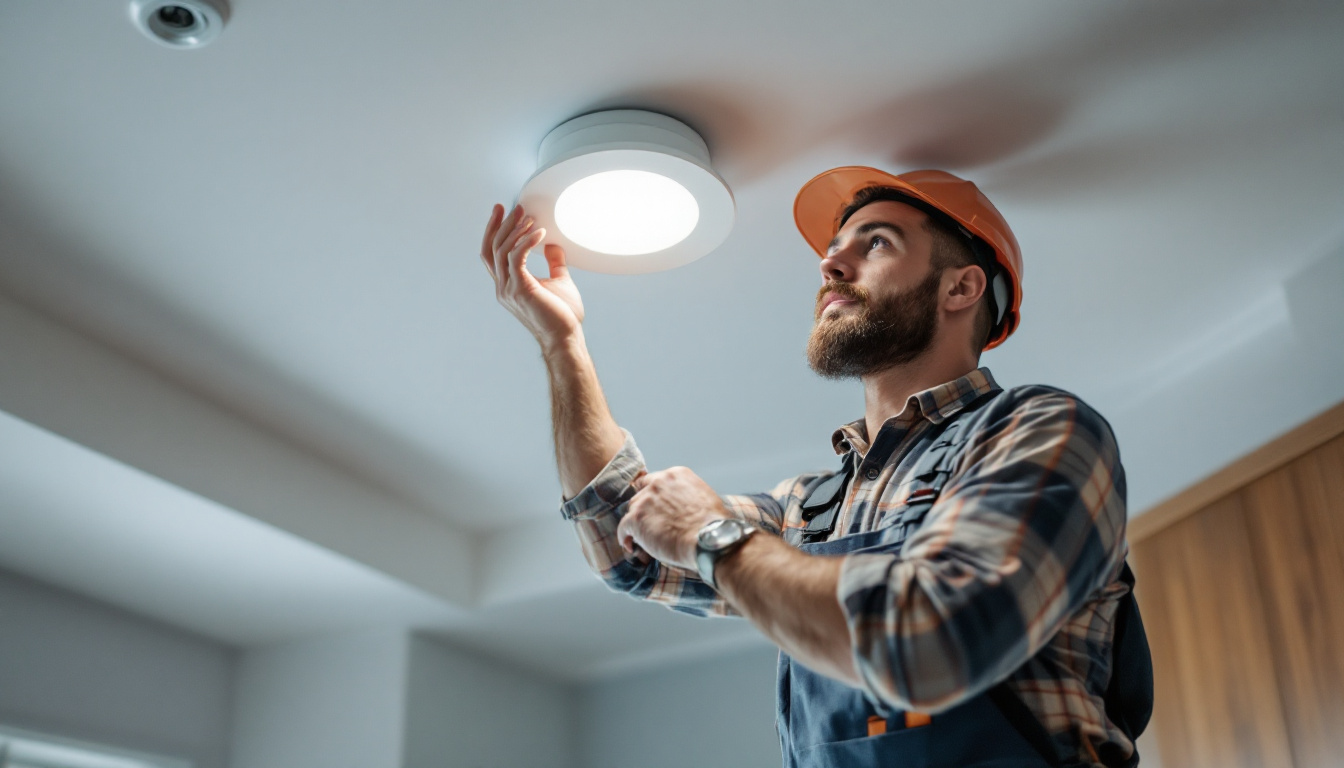
In the ever-evolving world of lighting technology, wafer LED lights have emerged as a popular choice among lighting contractors. Their compact size, energy efficiency, and versatility make them ideal for a variety of applications. However, to maximize their potential, it is essential for contractors to understand the best practices associated with their installation and use. This article delves into the nuances of wafer LED lights, providing valuable insights and tips for lighting professionals.
Wafer LED lights are thin, flat light fixtures that utilize advanced LED technology. Their design allows for easy integration into various settings, from residential homes to commercial spaces. These lights are often used in recessed lighting applications, under cabinets, and in decorative fixtures. The compact nature of wafer LEDs not only enhances their functionality but also contributes to a sleek and modern aesthetic that complements contemporary architecture.
One of the standout features of wafer LED lights is their slim profile. This design not only makes them aesthetically pleasing but also allows for installation in tight spaces where traditional lighting fixtures may not fit. Additionally, wafer LEDs are known for their energy efficiency, consuming significantly less power than incandescent or fluorescent lights while providing comparable or superior brightness. Moreover, many wafer LED lights come with adjustable color temperatures, enabling users to switch between warm and cool light settings to create the desired ambiance for any occasion.
Wafer LED lights are incredibly versatile, making them suitable for various applications. In residential settings, they can be used for ambient lighting, task lighting, or accent lighting. In commercial environments, these lights are ideal for office spaces, retail displays, and hospitality venues. Their ability to blend seamlessly into ceilings or walls makes them an attractive option for modern interior design. Furthermore, wafer LEDs are increasingly being utilized in outdoor settings, such as patios and walkways, where their durability and weather resistance can enhance safety and visibility without compromising on style.
In addition to their aesthetic and functional benefits, wafer LED lights contribute to sustainability efforts. With a lifespan that can exceed 25,000 hours, they reduce the frequency of replacements, thereby minimizing waste. This longevity, combined with their low energy consumption, makes them an eco-friendly choice for both homeowners and businesses looking to lower their carbon footprint. As technology continues to advance, we can expect to see even more innovative features in wafer LED lights, such as smart connectivity options that allow for remote control and automation, further enhancing their appeal in today’s tech-savvy world.
Proper installation is crucial to ensuring the longevity and performance of wafer LED lights. Lighting contractors should follow specific best practices to achieve optimal results.
Before installation, it is essential to plan the layout of the wafer LED lights. This involves considering the purpose of the lighting, the desired ambiance, and the specific areas that require illumination. A well-thought-out layout not only enhances the aesthetic appeal but also ensures that the lighting is functional and effective. For instance, in a residential setting, layering different types of lighting—ambient, task, and accent—can create a harmonious environment that caters to various activities, from reading to entertaining guests. Additionally, taking into account the height of ceilings and the presence of furniture can help avoid shadows and ensure even light distribution throughout the space.
Using the appropriate tools and materials is vital for a successful installation. Contractors should have access to high-quality wiring, connectors, and mounting hardware. Additionally, using a voltage tester to ensure the electrical system is safe before installation can prevent potential hazards. Beyond the basics, investing in tools such as a laser level can help achieve precise alignment of lights, while a stud finder can assist in securely anchoring fixtures to prevent sagging or misalignment over time. It’s also beneficial to have a variety of mounting options on hand, such as adjustable brackets or ceiling clips, to accommodate different installation scenarios and ensure a professional finish.
When connecting wafer LED lights, it is crucial to follow the manufacturer’s instructions carefully. Ensuring that all electrical connections are secure and properly insulated will reduce the risk of electrical failures. Furthermore, it is advisable to use wire nuts or electrical tape to secure connections and prevent any exposed wires. In addition to these precautions, checking for any signs of wear or damage in existing wiring before installation can save time and resources. If any issues are found, it may be necessary to replace outdated wiring to meet current safety standards. Moreover, implementing a systematic approach to labeling wires during installation can simplify future maintenance or upgrades, allowing for easier troubleshooting and modifications as lighting needs evolve over time.
One of the primary advantages of wafer LED lights is their energy efficiency. As energy costs continue to rise, using LED technology can lead to significant savings for both contractors and their clients.
Wafer LED lights come with energy ratings that indicate their efficiency. Familiarizing oneself with these ratings can help contractors recommend the best options to clients. Look for lights with the ENERGY STAR label, which signifies that the product meets strict energy efficiency guidelines set by the U.S. Environmental Protection Agency.
Incorporating wafer LED lights into projects not only benefits clients financially but also supports sustainable practices. These lights have a longer lifespan compared to traditional bulbs, reducing waste and the frequency of replacements. Additionally, they contain no harmful substances like mercury, making them an environmentally friendly choice.
Design plays a significant role in the effectiveness of wafer LED lights. Lighting contractors must consider various design elements to ensure that the lighting enhances the overall aesthetic of the space.
Wafer LED lights are available in different color temperatures, ranging from warm white to cool daylight. Selecting the appropriate color temperature is essential for achieving the desired ambiance. For example, warm white lights create a cozy atmosphere, making them suitable for living rooms and bedrooms, while cooler temperatures are ideal for workspaces that require focus and concentration.
Many clients prefer adjustable lighting to create different moods and save energy. When installing wafer LED lights, it is important to check for dimmer compatibility. Not all LED lights work with every dimmer switch, so selecting compatible products can enhance the functionality and versatility of the lighting system.
Even with high-quality wafer LED lights, maintenance and troubleshooting are essential aspects of ensuring long-term performance. Lighting contractors should be prepared to address common issues that may arise.
Conducting regular inspections of wafer LED lights can help identify potential issues before they become significant problems. This includes checking for flickering lights, unusual sounds, or changes in brightness. Early detection can save time and resources in the long run.
Flickering or dimming lights can be indicative of various issues, such as loose connections or incompatible dimmers. Troubleshooting these problems involves checking the electrical connections and ensuring that the lights are compatible with the existing dimmer switches. If issues persist, consulting the manufacturer’s guidelines or seeking professional assistance may be necessary.
Educating clients about wafer LED lights is a critical aspect of the contractor-client relationship. Providing clear information can help clients make informed decisions and understand the benefits of their investment.
Clients may be initially hesitant to invest in wafer LED lights due to their upfront costs. However, explaining the long-term energy savings can help alleviate concerns. Providing a cost analysis that compares energy usage between traditional lighting and wafer LEDs can effectively demonstrate the financial benefits over time.
In addition to energy efficiency, the aesthetic benefits of wafer LED lights should be emphasized. Showcasing examples of successful installations can help clients visualize the potential of these lights in their spaces. Providing samples of different color temperatures and designs can also assist clients in making their selections.
The lighting industry is constantly evolving, with new technologies and trends emerging regularly. Staying informed about these changes is crucial for lighting contractors who want to remain competitive.
Participating in trade shows and industry conferences is an excellent way for contractors to learn about the latest advancements in lighting technology. These events often feature product demonstrations, workshops, and networking opportunities that can enhance a contractor’s knowledge and skills.
Subscribing to industry publications and following reputable online resources can provide valuable insights into new products, technologies, and best practices. Engaging with online forums and communities can also facilitate knowledge sharing among lighting professionals.
Wafer LED lights represent a significant advancement in lighting technology, offering numerous benefits for both contractors and clients. By understanding the key features, installation best practices, and maintenance requirements, lighting contractors can maximize the potential of these innovative fixtures. Furthermore, staying updated with industry trends and educating clients about the advantages of wafer LED lights can foster strong relationships and ensure successful projects.
As the demand for energy-efficient and aesthetically pleasing lighting solutions continues to grow, embracing wafer LED lights will position contractors as leaders in the field. By implementing the best practices outlined in this article, lighting professionals can enhance their expertise and deliver exceptional results in every project.
Ready to elevate your lighting projects with the cutting-edge technology of wafer LED lights? Look no further than LumenWholesale, where we provide lighting contractors with the highest quality, spec-grade lighting products at unbeatable wholesale prices. Say goodbye to local distributor markups and hello to superior lighting solutions that meet the highest industry standards. With LumenWholesale, bulk buying is a breeze, and with free shipping, you’re guaranteed premium lighting at the best value — all without hidden fees or compromises. Don’t miss out on the perfect combination of quality, affordability, and convenience. Wholesale Lighting at the Best Value is just a click away.

Discover why LED outdoor flood light bulbs are a game-changer for lighting contractors.

Discover essential tips and best practices for lighting contractors on installing motion sensing outdoor lights.

Discover why flood lights with outlets are a game-changer for lighting contractors.

Discover the pitfalls to avoid when installing can lights in ceilings.